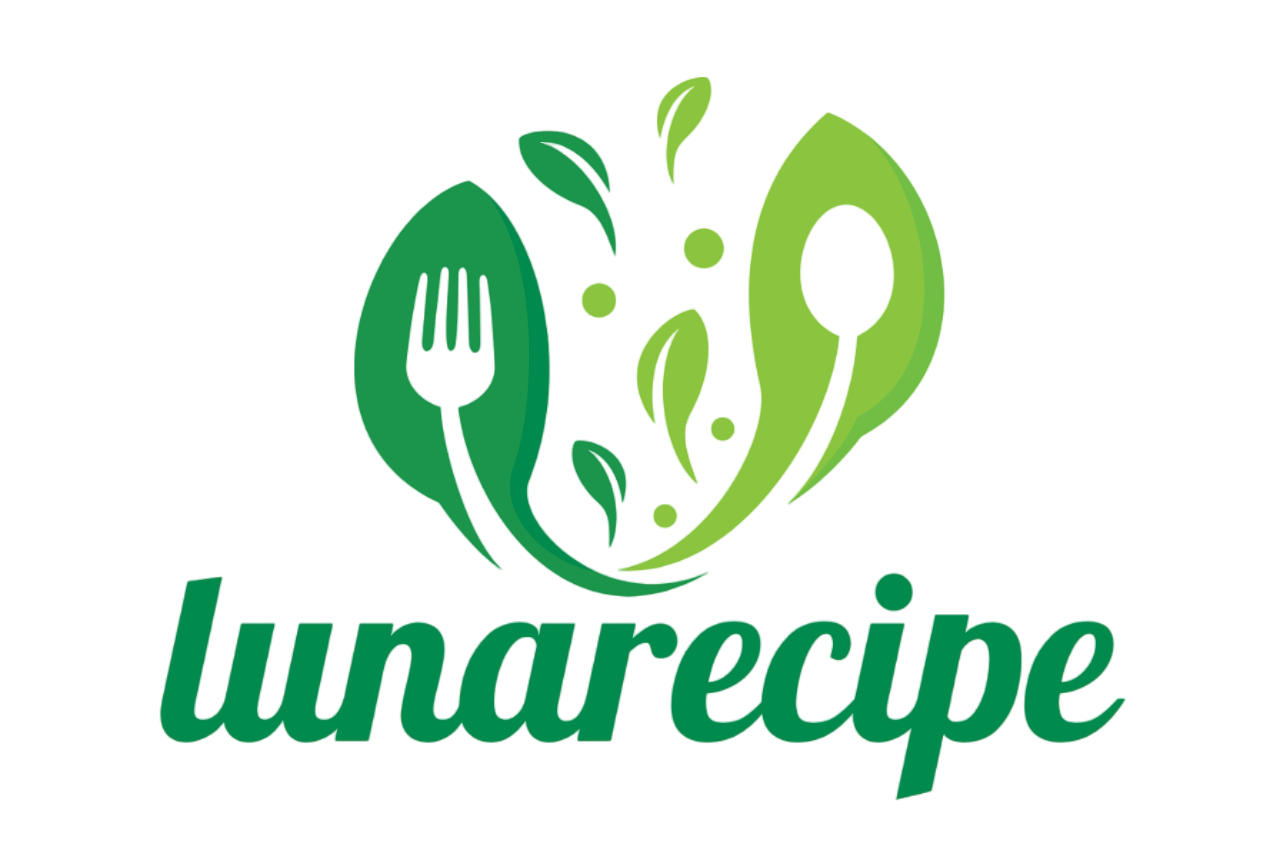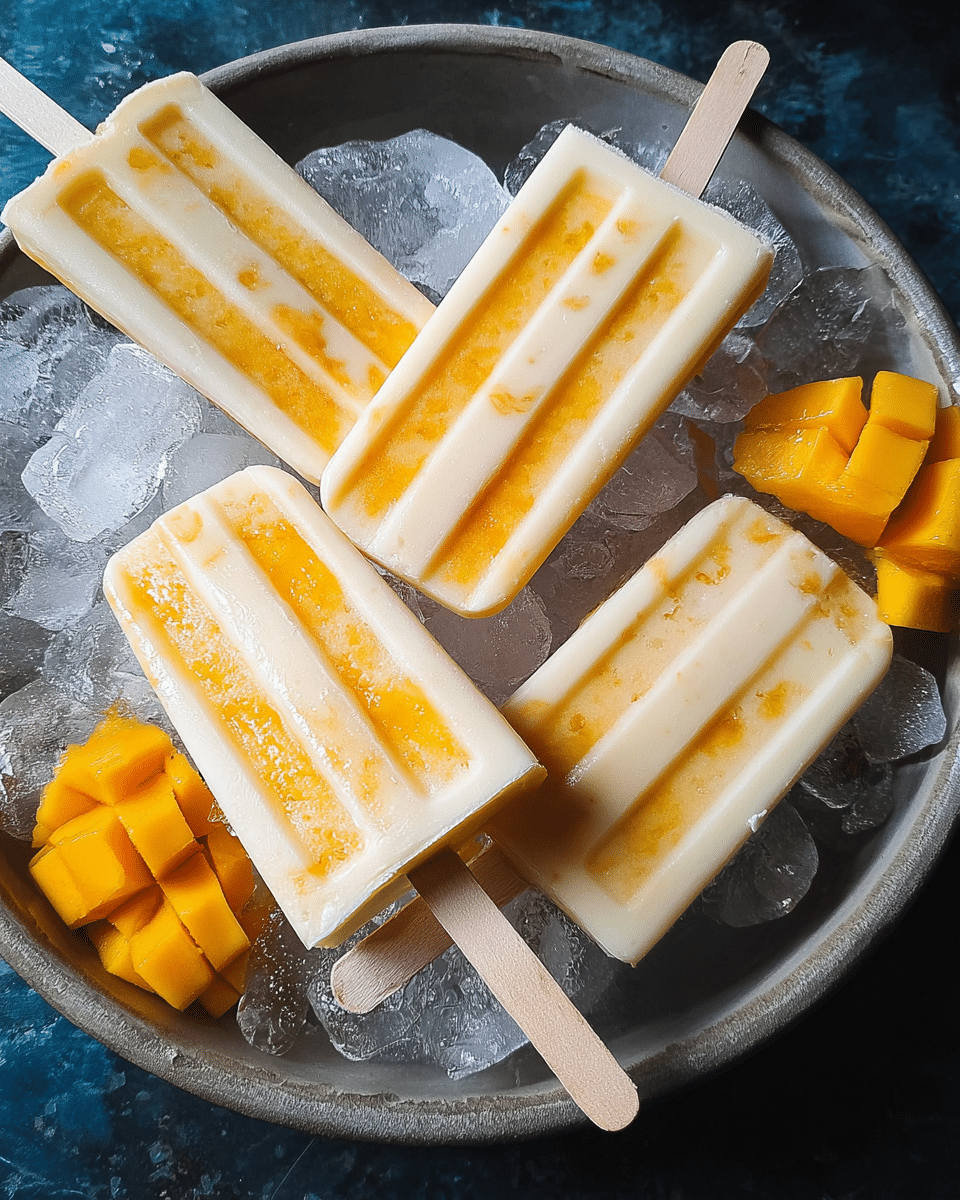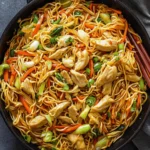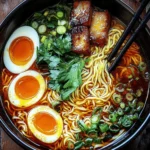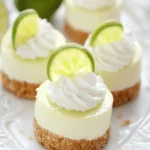These Mango Sticky Rice Popsicles are the perfect tropical dessert for any occasion. A blend of sweet, sticky rice and fresh mango, complemented by the creamy richness of coconut milk, creates a flavor explosion with each bite. Whether you’re hosting a summer gathering or simply craving something refreshing, these popsicles are sure to impress.
Perfect for cooling off on a hot day, these popsicles bring the classic Thai dessert to life in an easy-to-make frozen form. The combination of soft, sticky rice, ripe mango, and coconut milk is a match made in heaven. They’re not just visually stunning but incredibly delicious, offering a sweet, satisfying end to any meal or a light snack on their own.
Full Recipe:
-
1 cup coconut milk
-
1/2 cup sugar
-
1/4 teaspoon salt
-
2 cups sticky rice, cooked
-
1 large mango, peeled and diced
-
1/4 cup shredded coconut (optional for garnish)
Directions:
-
In a small saucepan, heat the coconut milk, sugar, and salt over medium heat. Stir until the sugar has dissolved completely, and remove from heat.
-
Pour the coconut milk mixture over the cooked sticky rice and stir well. Let it sit to absorb the coconut milk.
-
While the sticky rice is absorbing the coconut milk, prepare the mango by peeling and dicing it into small pieces.
-
Take popsicle molds and layer the sticky rice mixture into them. After the rice layer, add a spoonful of diced mango.
-
Repeat layering the sticky rice and mango until the mold is filled.
-
Insert sticks into the popsicles and freeze for at least 4 hours or until fully set.
-
Before serving, if desired, sprinkle the popsicles with shredded coconut for extra flavor and texture.
Prep Time: 10 minutes | Freezing Time: 4 hours | Total Time: 4 hours 10 minutes
Kcal: 220 kcal | Servings: 6 popsicles
History and Origin
Mango Sticky Rice (known as Khao Niew Mamuang in Thai) is a traditional Thai dessert that has been enjoyed for centuries. It holds a special place in Thai cuisine, often being served during festivals, celebrations, or as a comforting dessert after a meal. The dish typically consists of sticky rice, which is a variety of glutinous rice cooked with coconut milk, sugar, and a pinch of salt, served alongside fresh, sweet mango slices.
The origins of Mango Sticky Rice are deeply rooted in Southeast Asia, where glutinous rice has been a staple food for thousands of years. It is believed that this dish emerged in Thailand, although similar variations can be found throughout Southeast Asia, including in Laos, Cambodia, and Myanmar. In Thailand, Mango Sticky Rice is a dish that exemplifies the balance of sweet and savory flavors, using simple yet aromatic ingredients.
The combination of coconut milk and rice is a typical pairing in many Asian cuisines, as coconut milk adds richness and creaminess, complementing the starchy texture of the rice. Mango Sticky Rice gained international recognition when it was introduced to food lovers around the world, with the tropical sweetness of mango and the creamy coconut rice capturing the hearts of many. Today, this dessert is enjoyed globally, often adapted into modern versions such as ice cream or, as in this case, popsicles.
Variations and Adaptations
While the classic Mango Sticky Rice is a simple combination of coconut milk, sticky rice, and mango, there are numerous ways to adapt and experiment with this beloved dessert. One common variation is adding a sprinkle of toasted sesame seeds or mung beans on top of the rice, giving it a crunchy texture and extra flavor. Some people also like to drizzle a bit of condensed milk or caramel sauce for a richer, sweeter finish.
In other regions, you may find different variations based on the mango variety or the type of sticky rice used. In some parts of Thailand, for instance, black sticky rice may be used as an alternative to white rice, giving the dessert a unique color and a slightly different flavor. Additionally, certain regions may add fruit toppings or serve it with a side of fried coconut or crispy rice for added contrast.
Another interesting variation is to infuse the coconut milk with pandan leaves, which impart a subtle, fragrant aroma and a pale green color to the dessert. This variation is especially popular in Thai and other Southeast Asian cuisines, where pandan is a frequently used flavoring agent.
Mango Sticky Rice Popsicles are a modern, creative adaptation of the traditional dessert. By freezing the ingredients, you can enjoy the comforting elements of the dish in a portable, on-the-go format. This version is perfect for the summer months when you crave the flavors of a tropical dessert but need something cold and refreshing.
Nutritional Information
Mango Sticky Rice Popsicles, like many desserts, are a delicious indulgence, but they also offer a few health benefits thanks to their wholesome ingredients. Let’s break down the nutritional components:
-
Coconut Milk: This rich and creamy ingredient provides healthy fats, particularly medium-chain triglycerides (MCTs), which are believed to have benefits such as boosting metabolism and supporting brain health. Coconut milk is also a good source of vitamins C and E, which contribute to skin health and immune function.
-
Sticky Rice: While sticky rice is high in carbohydrates, it is also gluten-free and provides a good source of energy. It is rich in manganese, which supports bone health, and provides small amounts of essential vitamins and minerals.
-
Mango: Mangoes are a powerhouse of nutrients, including vitamins A and C, both of which support immune health and skin. They also contain fiber, which aids digestion and contributes to overall gut health. The natural sugars in mangoes provide a sweet taste without the need for added refined sugars.
-
Shredded Coconut: If included as a garnish, shredded coconut adds fiber, healthy fats, and small amounts of protein. It also provides minerals like iron and magnesium, which contribute to heart and muscle health.
On the downside, while these popsicles are made with healthy ingredients, they do contain sugar, both from the coconut milk and the mangoes. Depending on the amount of sweetener you choose to add, the sugar content can vary, so it’s essential to enjoy these popsicles in moderation if you’re watching your sugar intake.
Serving Suggestions and Pairings
Mango Sticky Rice Popsicles are a versatile dessert that can be enjoyed on their own or as part of a larger tropical-themed meal. Here are some creative ideas for serving and pairing:
-
As a dessert after Thai food: These popsicles pair beautifully with traditional Thai dishes such as Pad Thai, Green Curry, or Tom Yum Soup. The refreshing popsicle balances out the heat and spiciness of the main dishes.
-
With fresh fruit: Serve these popsicles alongside other tropical fruits like pineapple, papaya, or dragon fruit for a vibrant fruit platter. The sweet and tangy flavors will complement each other beautifully.
-
With coconut or vanilla ice cream: For an even richer treat, pair the popsicles with a scoop of coconut or vanilla ice cream. The combination of creamy ice cream and the refreshing popsicle will offer a balance of textures and flavors.
-
With a tropical drink: Pair these popsicles with a cold glass of coconut water, iced Thai tea, or a fruity cocktail such as a piña colada for a complete tropical experience.
Tips and Tricks for Success
To ensure your Mango Sticky Rice Popsicles turn out perfectly, here are some helpful tips:
Advertisement
-
Use perfectly ripe mangoes: The sweetness and flavor of the mango are essential to the success of this recipe. Make sure the mangoes you use are ripe and juicy, as they will provide the best flavor and texture for the popsicles.
-
Don’t skip soaking the sticky rice: For the right consistency, it’s important to soak the sticky rice for at least a few hours before cooking. This allows the rice to absorb the coconut milk properly and gives it the signature sticky texture.
-
Freeze long enough: Be patient! These popsicles need to freeze for several hours to achieve the right texture. Ideally, freeze them overnight to ensure they’re completely set before serving.
-
Add a little crunch: For extra texture, try sprinkling toasted sesame seeds or shredded coconut on top of the popsicles just before serving. This small addition can make a big difference in the overall experience.
-
Experiment with other fruits: While mango is the star of the show, feel free to try other tropical fruits like passion fruit or lychee to create your own twist on the popsicles.
Potential Health Benefits
In addition to being a delicious dessert, Mango Sticky Rice Popsicles also offer several health benefits thanks to their fresh ingredients:
-
Rich in vitamins: The coconut milk and mangoes provide a wealth of essential vitamins, including vitamins A, C, and E, which support immune function, eye health, and skin health.
-
Natural sugars: The natural sugars in mangoes are absorbed more slowly by the body than refined sugars, making this dessert a more sustainable source of sweetness.
-
Healthy fats: The coconut milk used in the popsicles contains medium-chain triglycerides (MCTs), which may help improve metabolism and provide a quick source of energy.
Conclusion
Mango Sticky Rice Popsicles are the ultimate tropical treat, combining the best of Thai dessert traditions with a fun, frozen twist. Whether you’re a fan of traditional Mango Sticky Rice or looking to try something new, these popsicles are a refreshing and satisfying way to enjoy a summer dessert. With their natural sweetness, creamy coconut base, and fresh mango flavor, they’re bound to be a hit at your next gathering. Give them a try and indulge in the tropical bliss!
